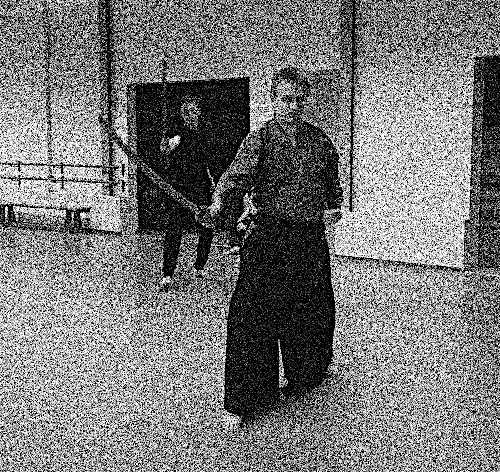Quick drawing of the sword
There is the erroneous assumption that Iaido practices drawing the sword as quickly as possible. The katana has to be used. As long as is in the sheath (saya) it can do little except impress with sheer bargaining. Some techniques are practiced in iaidokata (look at Ganmenate, Sotezuki, Shihogiri), where you can use the handle to create a pre-fight, especially when an opponent wants to grab your sword. Also, the right position and angle to the opponent is (more) decisive for a win. Now back of using the sword blade. Getting these out of the Saya quickly is an important technical aspect of Iaido practice. However, if you practice speed incorrectly 1.000 times, you approach an optimal movement very slowly.
Interaction of the hands
Quickly pulling the katana (nukitsuke) frees your blade. This works particularly well with good left hand technique. The right hand grabs the handle, the left hand is busy pulling off the saya (sayabiki). So both moves work together and free the blade in double speed. A harmoniously coordinated movement is ideal, so that the forces are balanced when drawing the sword. Imbalance delays and makes you slow. If the movement of the left hand is clearly and correctly controlled, matching the cutting angle, the movement of the sword becomes more free. One should also think about the interaction with the physical situation. One should understand that the hands are only power transmitters. In the Nukitsuke, forces are controlled via the back, do you feel it?
Drawing the blade is only the second step
Hectic ripping out the blade as quickly as possible for fight is just a sporting idea. Preparing in time for deployment is smarter. Existing constant attention (zanshin) enables anticipation and understanding of the situation. If I evade in action, the situation improves and I have more time. If I go into the opponent while pulling (the specialty of Iaido), the situation worsens for the opponent. At the same time he has to cope with my counterattack by approaching. The speed increases relative to the position of the attacker! A bad attacker has triggered three problems: the brave Iaidoka is prepared and, if necessary, gives way off, he also attacks with technology and comes up to him.
Strength versus technique
Speed can be practiced in the practiced processes of a combat event (Kata). It soon becomes clear that good pulling technique is not everything. Good movement a strong body are helpful and represent a basic structure. Western attitude is: strength favors speed. This error can be corrected when practicing kata. It becomes clear: too much force makes you hard and immobile. Free Ki flow through the body will be blocked. Our strength is the blade edge. So it depends on agility (test this with kata Ukenagashi Okuden) in order to achieve a quick effect (cutting). Regular stretching helps, fascia training, etc. All of your joints must play freely and not be blocked by inner muscle force.
Timing
Our action should always be connected with the opposing attack. Too quickly is of no use because you don’t hit, the opposite causes you will be hit yourself. When the opponent can no longer change his direction or at the moment, when the attack begins, these are good opportunities for your own action. When experienced Iaidoka perform kata it looks sort of calm and not quick. In doing so they show that they are working in harmony with body, the environment or in a way that suits the situation.
Conclusion
Pulling the sword at lightning speed is not enough. Even the best technology and strength are only accompanying aspects. Attention, situation picture, coordination, suppleness count through physical cooperation with the sword. A lot of practice also helps.
One more thing
I found a little film on YouTube. Here Iaijutsu is practiced ›on speed‹. All impressive. At minute 6:20 it happens: someone pulls and is ›finished earlier‹. His partner (left) signals that she is ›not ready yet‹. But she is wrong. Her counterpart did everything right, without great speed. Here comes the moment.
